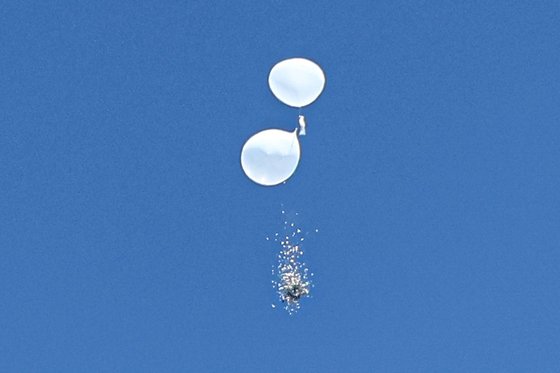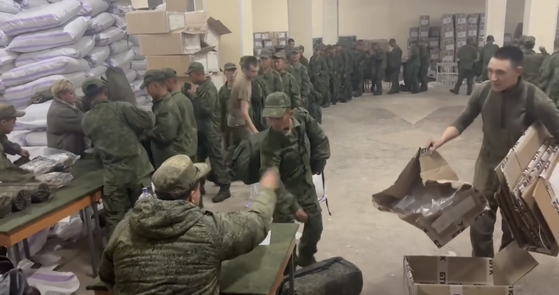There are growing signs that North Korean troops deployed to Russia have transferred their expertise on launching balloons filled with trash, previously used against South Korea, to Russian forces.
This suggests that North Korea may be using even these balloons as part of its military cooperation with Russia.
Furthermore, concerns are mounting that North Korea could evolve this tactic into a more advanced form of bioweapon or chemical attack against South Korea, leveraging their real-world experience.
On October 21, Ukrainian media outlets, including the Kyiv Post, reported that “Russian forces have detained 18 North Korean soldiers who recently deserted,” citing defense intelligence sources. The report noted that these soldiers had been teaching Russian troops how to use balloons for military purposes.

According to these reports, approximately 40 North Korean soldiers, believed to be part of a platoon, arrived in Russia and provided training on how to utilize balloons for “military purposes.” In return, Russia is said to have imparted modern infantry combat techniques to the North Korean forces.
If these reports are accurate, it may suggest that North Korea has been launching trash balloons since May to gather “balloon data” to transfer to Russia. North Korea appears to be assisting Russia in using balloons for reconnaissance and psychological warfare on the battlefield. Russia is reportedly considering deploying balloons to disrupt Ukrainian drone strikes.
Military authorities have also noted that North Korea’s balloons targeting the South have become increasingly sophisticated. From May 28 to October 19, North Korea launched approximately 6,000 balloons filled with waste over 29 separate instances. Initially, these balloons carried around 10 kg of trash in bags, but they have recently been equipped with GPS, heat timers, and detonators at the connection points between the balloons and their payloads, showing technological advancements.

The South Korean military believes that North Korea has been accumulating data on the range of its balloons, measuring factors such as wind direction, wind speed, altitude, and payload weight through repeated launches.
On October 18, Ukraine’s Strategic Communications and Information Security Center released a video showing North Korean soldiers, presumed to be in line to receive supplies from Russia.
A military official stated, “We are closely monitoring North Korea’s accumulation of data through GPS technology and other advancements,” adding, “While further analysis is required, we cannot rule out the possibility that North Korea will heighten the balloon threat through North Korea-Russia cooperation.”
There is also a chance that Russia, after using balloons militarily on the battlefield, could transfer its own experience back to North Korea. Domestic experts have long believed that North Korea lacks the technology to store and maintain biological or chemical agents for balloon-based attacks. Given the shared border between the Koreas, shifting weather conditions could even result in North Korea being harmed by its own attacks.
However, if North Korea acquires new tactical or technological insights from Russia and incorporates them into its balloon operations, this could pose a direct threat to South Korea. North Korea may even be using the Ukraine war as a practice ground for future attacks against the South using balloons.
It is said that many within the military remain skeptical about the military effectiveness of balloons, which rely on natural wind patterns. North Korea’s trash balloon program is unlikely to be a major focus of North Korea-Russia military cooperation.
Nonetheless, experts have pointed out the increasing trend toward “hybrid warfare,” which combines both military and non-military elements. Balloons are cheaper than drones, making them an appealing option not just for reconnaissance and air defense but also for acts of terror.
Palestinian militant group Hamas has previously used balloons carrying explosives in “arson attacks” against Israel. In response, Israel has deployed balloons with surveillance cameras to monitor its unmanned defensive wall, the “smart fence,” along the Gaza Strip.
Cho Sang-geun, a research professor at KAIST’s National Future Strategy Technology Policy Institute, noted, “Balloons can be used as a psychological warfare tool to weaken cohesion between the public, government, and military, which is a key element in total warfare.”
BY KEUNPYUNG LEE, YOUNGNAM KIM [kim.youngnam@koreadaily.com]




